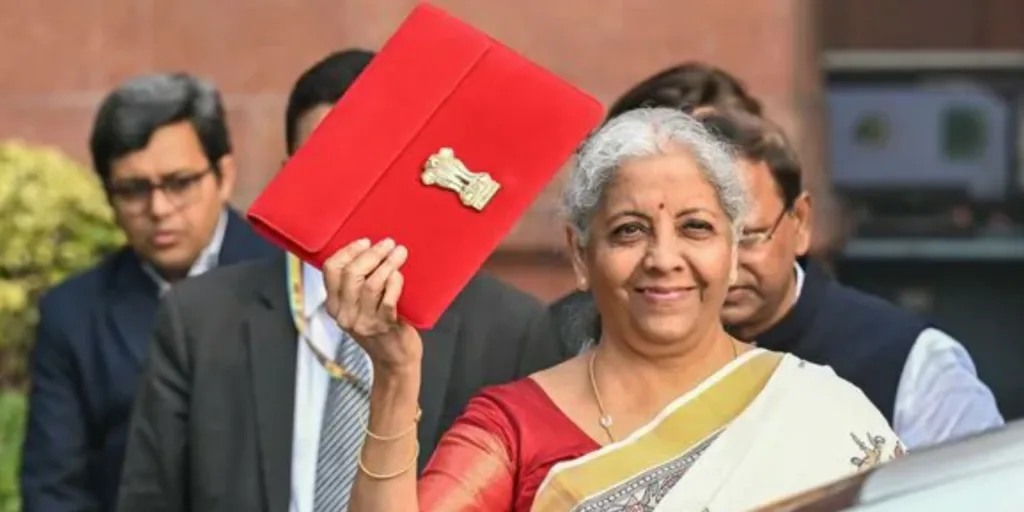The Union Budget, presented annually by the Finance Minister, is like a financial roadmap for the country. It outlines the government’s income and expenditure plans for the upcoming fiscal year. Think of it as a household budget, but on a massive scale, impacting every citizen. The Budget 2025 is eagerly anticipated, and while the specifics are yet to be revealed, we can discuss some key areas that are likely to be addressed and their potential impact. Let’s break down what to look for and why it matters to you.

1. Tax Relief in Budget: A Welcome Reprieve?
One of the most talked-about aspects of any budget is taxation. Will there be changes to income tax slabs? Will there be any deductions or exemptions that could lighten the tax burden? These questions are on everyone’s mind. Changes in direct taxes, like income tax, directly affect how much money individuals take home. Lower taxes can boost spending power, allowing people to invest more, save more, or simply enjoy more of their earnings. Conversely, if taxes remain the same or increase, it could mean less disposable income.
Beyond income tax, the budget also often addresses indirect taxes, like GST (Goods and Services Tax). Changes in GST rates can impact the prices of everyday items, from groceries to electronics. Lower GST on certain goods can make them more affordable, while increases can make them pricier.
2. Job Creation: Building a Stronger Workforce
Unemployment is a significant concern, and the budget often outlines strategies to boost job creation. This could involve investments in infrastructure projects, which create construction jobs, or incentives for businesses to hire more employees. Focus on specific sectors, like manufacturing or technology, can also lead to targeted job growth. A strong emphasis on skill development programs can also equip individuals with the necessary skills to secure employment. A budget that prioritizes job creation can have a positive ripple effect, boosting economic activity and improving livelihoods.
3. Infrastructure Development: Laying the Foundation for Growth
Imagine roads, railways, and airports – these are the lifelines of a nation’s economy. The budget typically allocates significant funds for infrastructure development. Investing in these areas not only creates jobs but also facilitates trade, improves connectivity, and boosts overall economic growth. Think of how better roads can make it easier for farmers to transport their produce to markets or how improved ports can facilitate international trade. Infrastructure development is crucial for long-term economic prosperity.
4. Agriculture and Rural Development: Nurturing the Roots of Our Economy
Agriculture plays a vital role in India’s economy, and the budget often includes measures to support the agricultural sector. This could involve subsidies for fertilizers, investments in irrigation projects, or initiatives to promote agricultural research and innovation. Support for rural development is also crucial, focusing on areas like education, healthcare, and sanitation. A thriving agricultural sector and a robust rural economy are essential for inclusive growth.
5. Education and Healthcare: Investing in Human Capital
Education and healthcare are fundamental to a nation’s progress. The budget often allocates funds for improving the quality of education, building new schools and hospitals, and providing access to affordable healthcare. Investments in these sectors are crucial for developing a skilled workforce and ensuring the well-being of the population. A healthy and educated populace is more productive and contributes to the nation’s overall development.
6. Social Welfare Schemes: Supporting the Vulnerable
The budget also addresses social welfare schemes, which provide support to vulnerable sections of society. This could involve pensions for senior citizens, scholarships for students from disadvantaged backgrounds, or programs to provide affordable housing. These schemes act as a safety net, ensuring that everyone has access to basic necessities and opportunities.
7. Defense Spending: Protecting the Nation
National security is a priority, and the budget allocates funds for defense spending. This includes the procurement of military equipment, the maintenance of armed forces, and investments in defense infrastructure. The allocation for defense reflects the government’s assessment of the security challenges facing the nation.
8. Fiscal Prudence: Balancing the Books
The government needs to manage its finances responsibly. The budget aims to balance income and expenditure, ensuring that the government doesn’t spend more than it earns. Fiscal prudence is crucial for maintaining economic stability and avoiding excessive debt.
9. Focus on Sustainability: Building a Greener Future
Increasingly, budgets are focusing on environmental sustainability. This could involve incentives for renewable energy, investments in green technologies, and measures to combat climate change. A focus on sustainability is crucial for ensuring a healthy planet for future generations.
The Union Budget is a complex document, but its impact is felt by every citizen. Understanding the key areas addressed in the budget can help us better understand the government’s priorities and how they might affect our lives. By paying attention to these key takeaways, we can all become more informed and engaged citizens.
Read here about Union Budget 2025
Explore our more Trending Blogs. Click here.


